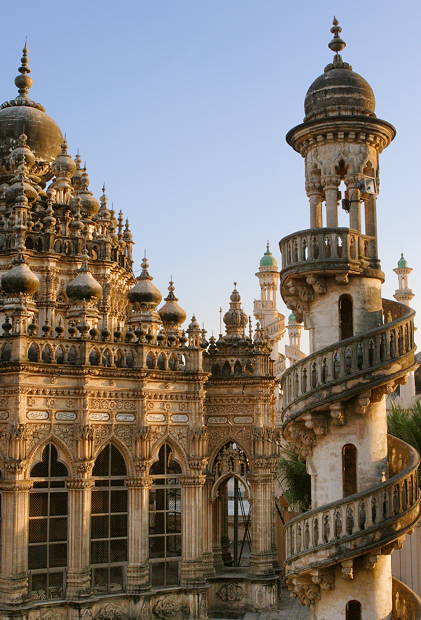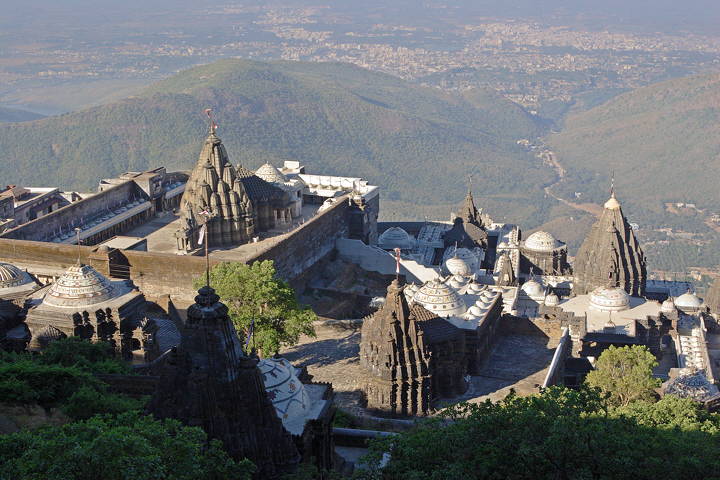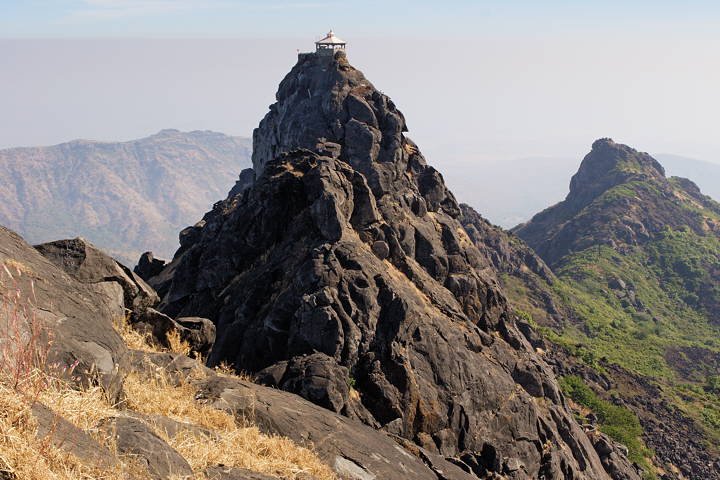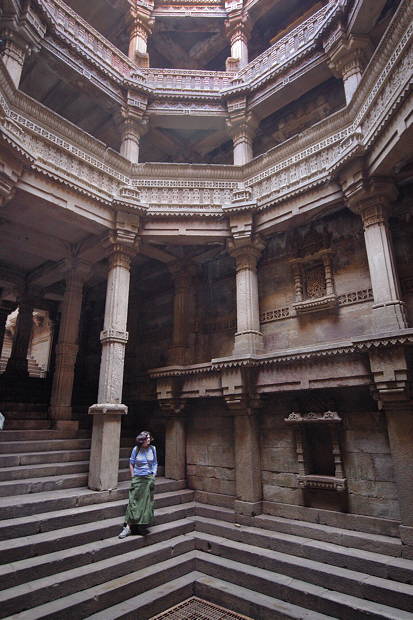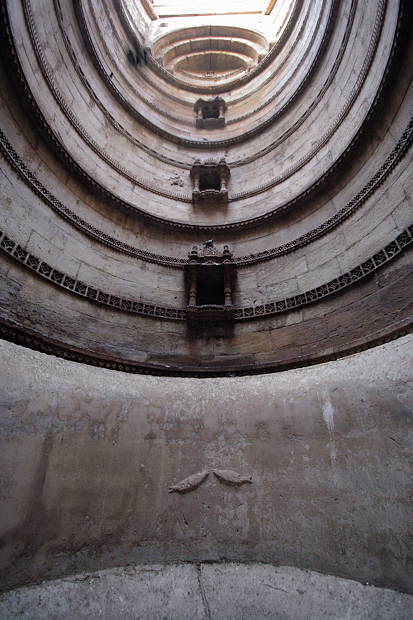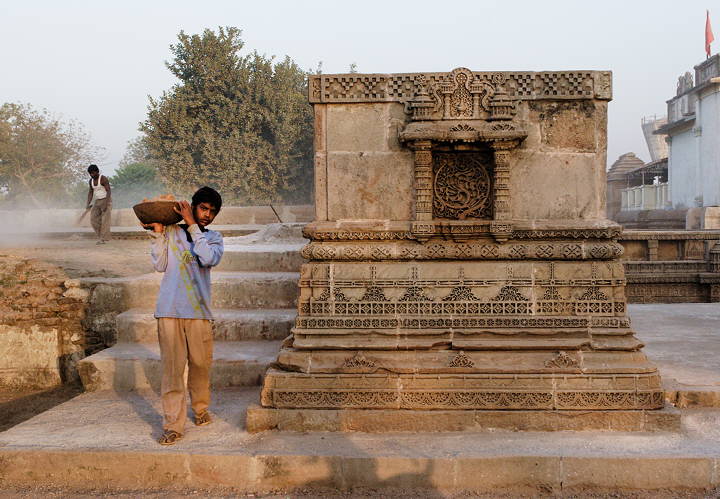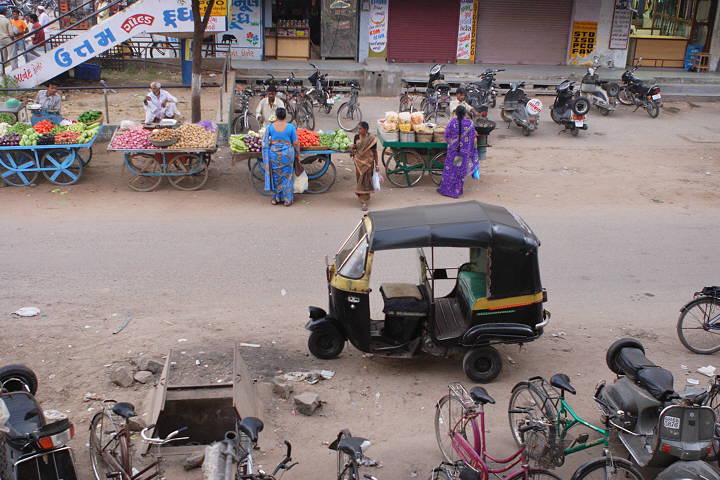My friend Ashok sent me the "Indian Rules of the Road," below. While it may seem like
a joke, it's about as good a description of Indian traffic as I've
seen. It certainly applied to our trip between Ahmedabad and Junagadh,
which was absolutely hair-raising, though not as frightening as the trip my son Nathan took three years ago.
A new National Highway has been built. It's a well-paved four lane
divided highway about three-quarters of the way; the remainder is two
lanes. But the traffic is unchanged (see Article II, below). When we finally reached the divided four
lane highway on
the way back from Junagadh, I offered thanks to Krishna, Ganesh, Allah,
Jesus, Buddha, and all the rest. I believe we owe our survival to the entire pantheon, working together in harmony.
Scholarly commentary:
The original text may or may not be in Sanscrit (no way to know for
sure), but it is unlikely to date from Vedic
times. The population of 870 million places it around 1992 or 93. The
most likely source I can glean from the Mother Lode of all Knowledge
(Google.com) is Acharya (now Paramacharya) Palaniswami, editor of Hinduism Today, reprinted here, and well worth reading. He presents a more detailed set of rules, for which he makes a dubious claim of Sanscrit origin.
Now that the Ambassador automobile monopoly has been broken, Indian cars are equipped
with reverse gears with safety beepers that play "It's a Small World." So
if you didn't get your fill at Disneyland, try India. (In the US, trucks
have reverse safety beepers, but autos don't.)
Safety awareness is growing in India, albeit slowly. Seat belts are
universally available. Motorcycle helmet laws vary from state to state.
They're strictly enforced in Jaipur, where all drivers, but few
passengers, wear helmets. There is no helmet law in Ahmedabad. Not more
than one in twenty biker wears one.
|
Rules Of The Road, Indian Style
Traveling on Indian Roads is an almost hallucinatory
potion of
sound, spectacle and experience. It is frequently heart-rending,
sometimes hilarious, mostly exhilarating, always unforgettable -- and,
when you are
on the roads, extremely dangerous. Most Indian road users observe a version of the Highway Code based on a
Sanskrit text. These 12 rules of the Indian road are published for the
first time in English:
ARTICLE I:
The assumption of immortality is required of all road users.
ARTICLE II:
Indian traffic, like Indian society, is structured on a strict caste
system. The following precedence must be accorded at all times. In
descending order, give way to:Cows, elephants, heavy trucks, buses, official
cars, camels, light trucks, buffalo, jeeps, ox-carts, private cars,
motorcycles, scooters, auto-rickshaws, pigs, pedal rickshaws, goats, bicycles
(goods-carrying), handcarts, bicycles (passenger-carrying), dogs, pedestrians.
ARTICLE III:
All wheeled vehicles shall be driven in accordance with the maxim: to
slow is to falter, to brake is to fail, to stop is defeat. This is the
Indian drivers' mantra.
ARTICLE IV: Use of horn (also known as the sonic fender or aural amulet):
Cars (IV,1,a-c):
1. Short blasts (urgent) indicate supremacy, i.e., in clearing
dogs, rickshaws and pedestrians from path.
2. Long blasts (desperate) denote supplication, i.e., to
oncoming truck: "I am going too fast to stop, so unless you slow down we
shall both die". In extreme cases this may be accompanied by flashing of
headlights (frantic).
3. Single blast (casual) means: "I have seen
someone out of India's 870 million whom I recognise,"
"There is a bird in the road (which at this speed could go through my
windscreen)," or "I have not blown my horn for several minutes."
Trucks and buses (IV,2,a):
A. All horn signals have the same meaning, viz: "I have
an all-up weight of approximately 12.5 tons and have no intention of stopping,
even if I could." This signal may be emphasised by the use of headlamps.
ARTICLE V remains subject to the provision of Order of Precedence in Article II, above.
ARTICLE VI: All manoeuvres, use of horn and evasive action shall be left
until the last possible moment.
ARTICLE VII: In the absence of seat belts (which there is), car occupants
shall wear garlands of marigolds. These should be kept fastened at all times.
ARTICLE VIII:
1. Rights of way: Traffic entering
a road from the left has priority. So has traffic from the right, and
also traffic in the middle.
2. Lane
discipline (VII,1): All Indian traffic at all times and irrespective of
direction of travel shall occupy the centre of the road.
ARTICLE IX: Roundabouts: India has no roundabouts. Apparent traffic
islands in the middle of crossroads have no traffic management function.
Any other impression should be ignored.
ARTICLE X: Overtaking is mandatory. Every moving vehicle is required to
overtake every other moving vehicle, irrespective of whether it has just
overtaken you. Overtaking should only be undertaken in suitable conditions,
such as in the face of oncoming traffic, on blind bends, at junctions and in
the middle of villages/city centres. No more than two inches should be
allowed between your vehicle and the one you are passing -- and one inch in the
case of bicycles or pedestrians.
ARTICLE XI: Nirvana may be obtained through the head-on crash.
ARTICLE XII: Reversing: no longer applicable since no vehicle in India has reverse gear. |
|

